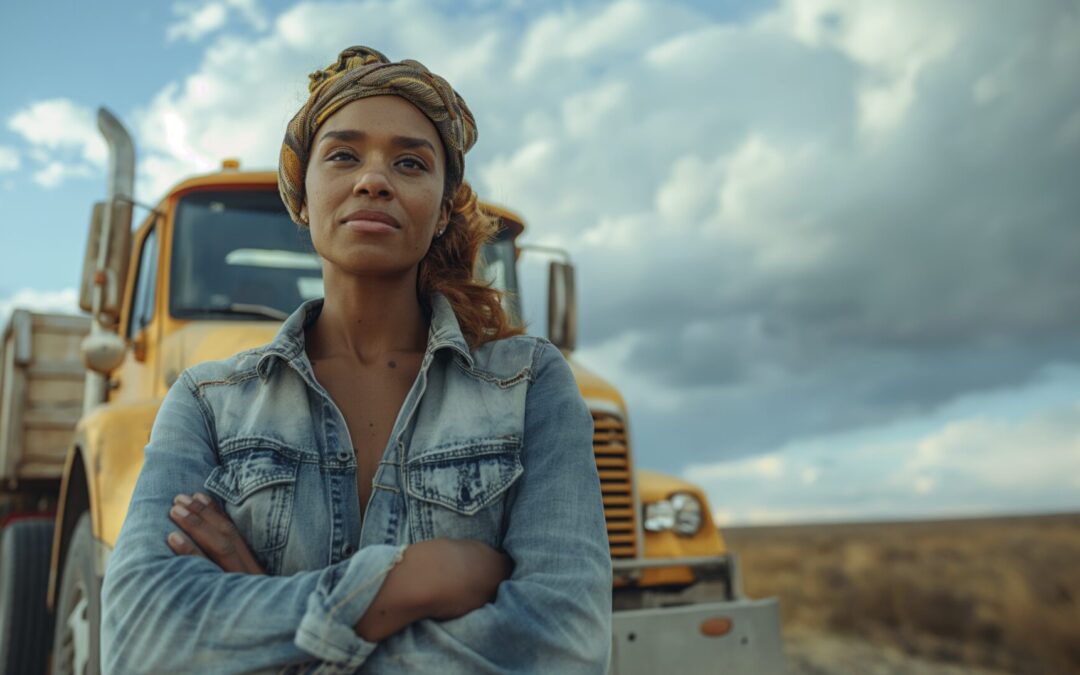Mining is often seen as one of the most demanding and dangerous fields—but for women, the stakes can be even higher. While the sector continues to evolve, the physical safety of women in mining remains an issue that requires more than just surface-level awareness. Women in mining often encounter unique challenges, from navigating male-dominated spaces to facing specific safety risks. In this article, we’ll delve into the elements shaping women’s safety in the mining industry, from workplace culture and equipment design to regulatory safeguards and on-the-ground realities.
What is the Mining Environment Like?
The mining environment is typically tough. Let’s take a look:
Rugged Terrain: Workers often navigate steep, uneven landscapes, making physical endurance essential.
Heavy Machinery: Operating complex and dangerous equipment is a daily part of the job, requiring constant vigilance.
Harsh Weather Conditions: Mining sites can experience extreme temperature changes and unpredictable weather, adding to the risk.
Remote Locations: Many mines are situated far from medical facilities and emergency services, increasing response times in case of accidents.
High-Risk Atmosphere: The combination of environmental and operational hazards creates a consistently dangerous working environment.
Limited Access to Resources: With some sites in isolated areas, access to basic amenities, medical care, and safety resources can be severely limited.
What is the Experience Like for Women in Mining?
Women in mining face a unique set of challenges that go beyond the already tough physical demands of the job, and the experience can be a mix of empowerment and struggle. While there has been progress in gender inclusion within the industry, women often face skepticism about their abilities and qualifications. Even though they work in the same rugged environments and operate heavy machinery like their male counterparts, they often contend with equipment and safety gear that isn’t designed for their needs, making their tasks even more difficult and sometimes hazardous.
Additionally, the traditionally male-dominated culture can create an atmosphere where women feel isolated or pressured to prove themselves. Limited access to gender-specific facilities and health resources, along with barriers to career advancement, add further strain. Yet, despite these hurdles, women in mining continue to demonstrate resilience, adaptability, and leadership, playing an essential role in the industry’s growth.
What Dangers are Related to Women and Mining Specifically?
Women in mining encounter specific dangers, such as inadequate safety gear designed for their body types and limited access to safety training tailored to their needs. Additionally, they may face higher risks of harassment and discrimination, which can affect their overall well-being. Addressing these dangers is crucial for ensuring a safer and more supportive workplace for female miners.
What is the Effect of Workplace Culture on Women’s Safety?
A culture that promotes open communication and actively encourages reporting unsafe conditions can create a safer environment for all employees, particularly women. When women feel supported and valued, they are more likely to voice concerns about safety issues, leading to prompt action and improved conditions. Conversely, a toxic workplace culture that tolerates harassment, discrimination, or intimidation can escalate risks, making women vulnerable to both physical and emotional harm. Thus, fostering a positive and inclusive culture is essential—not only for the well-being of women but for the safety of all workers.

What Hazards May Impact Women Miners’ Occupational Safety?
Women miners face distinct hazards that can significantly impact their occupational safety. One of the primary concerns is ergonomic issues stemming from ill-fitting equipment and personal protective gear, which are often designed for male body types. This mismatch can lead to musculoskeletal injuries, discomfort, and fatigue that disproportionately affect women. Additionally, the physical demands of the job, such as heavy lifting, can be particularly challenging for women, who may not have the same physical strength as their male counterparts, increasing their risk of injury.
Women also face specific health risks, including exposure to harmful substances like silica dust and chemicals, which can have severe implications for reproductive health. Extreme weather conditions—whether excessive heat or frigid temperatures—can further impact women, particularly if they are not provided with adequate protective measures. Furthermore, psychological hazards, such as gender-based harassment or discrimination, can create a hostile work environment that affects mental health and overall job performance. To ensure the safety and well-being of women miners, employers must proactively assess these unique hazards and implement tailored safety measures that address their specific needs and challenges.
How Do MSHA Rules and Regulations Help Protect Women’s Safety?
The Mine Safety and Health Administration (MSHA) enforces regulations designed to enhance safety across the mining industry. These rules include mandatory safety training, equipment standards, and protocols for reporting unsafe conditions. By adhering to MSHA regulations, mining companies can create a safer work environment for all employees, particularly women who may face unique challenges.
Can Physical Threats Affect the Mental Health of Women Working in Mining?
Yes, physical threats can have a profound impact on the mental health of women in mining. The stress of working in a hazardous environment, coupled with potential harassment or discrimination, can lead to anxiety, depression, and other mental health issues. Addressing not only physical safety, but also the psychological safety, is integral to the well-being of women in the mining industry.
What an Employer Could Do to Help Keep Their Female Employees Safe
Employers can and should implement comprehensive safety training that addresses the specific needs of women, provide properly fitting personal protective equipment, and foster a culture of inclusivity and respect. Regularly reviewing safety protocols and encouraging feedback from female workers can also enhance safety measures and promote a healthier work environment. By actively engaging their female workforce and making necessary adjustments based on the feedback and experiences shared, employers can create a healthier, more supportive work environment that prioritizes the safety and well-being of all employees.
Building a Safer Future for Women in Mining
Understanding the physical safety of women in mining is essential for fostering a supportive and secure work environment. By addressing the unique challenges women face, promoting a positive workplace culture, and adhering to regulations, the mining industry can create a safer future for all workers. It is imperative that everyone—employers, industry leaders, and fellow miners—commit to advocating for systemic changes that prioritize safety and inclusivity. Together, we can break down barriers and build a mining environment where every worker, regardless of gender, feels valued, safe, and empowered to succeed.

